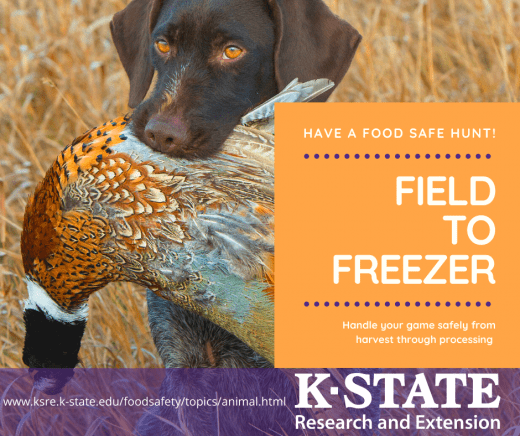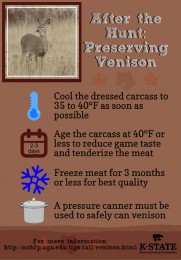Hunting season is in full gear for a variety of wildlife. Whether you are a new or experienced hunter, safety is key in many aspects, including food safety.
The handling of the meat from harvest to preparation can make a major difference in flavor and safety of the end product. Here are some resources from North Dakota State University Extension called the “Wild Side of the Menu.”
- Wild Side of the Menu No. 1—Care and Cookery—Information on proper care and cookery of wild game so you can fully enjoy the fruits of the field.
- Wild Side of the Menu No. 2—Preservation of Game Meats and Fish—Recommendations for safely preserving game meats and fish for later enjoyment. Freezing meat and fish is the most accepted way to maintain top quality. Other methods for preserving game meats include curing and smoking, drying, corning, canning and sausage making. Fish also may be pickled or canned.
- Wild Side of the Menu No. 3—Field to Freezer—Wild game that is properly handled in the field and correctly cooked to enhance its distinctive flavors holds a special place for many cooks. The purpose of this publication is to describe how to properly handle your game from harvesting through processing.
- Handling Game Birds from Field to Table—A challenge to hunt, but a tasty meal is the reward.


